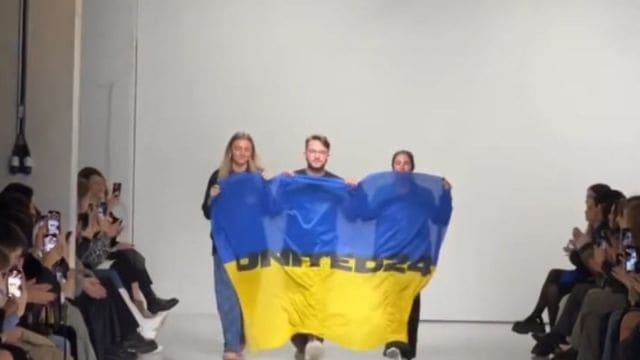
Written by Amit Aggarwal
Creativity has always been a means of coping with stress, especially in times of crisis — this has been a recurring theme in history. Art, fashion, music, and cinema have served as not only expressions of individual and collective experiences but also as powerful tools for social upheaval.
A contemporary example of creativity as a means of resistance and recovery is the Ukraine Fashion Week, held in the first week of September, amidst the ongoing war. Established in 1997, the event has consistently platformed Ukrainian talent and innovation. In recent years, especially since the invasion in 2022, it has taken on a deeper significance, reflecting the resilience of the Ukrainian people. Designers have adapted their collections to reflect the ongoing conflict, incorporating traditional Ukrainian motifs and embroidery to assert cultural identity. For instance, vyshyvanka blouses have become symbols of strength and heritage, a statement of sovereignty. By embedding cultural references into their designs, Ukrainian creators have offered a way to process and express the emotional turmoil of war, providing both artists and audiences a sense of control amidst chaos.
The therapeutic and expressive power of fashion is not unique to Ukraine. Throughout history, fashion movements have played a crucial role in helping individuals and societies cope — whether through the glamour of cinema, the subversive designs of post-war fashion, or the bold aesthetics of cultural movements.
After India’s independence in 1947, the trauma of Partition and nation-building sparked a need for healing and hope. Indian cinema, with films like Mother India (1957) and Mughal-e-Azam (1960), played a crucial role — the attempt was to unify the nation and set new fashion trends. The glamorous saris and elaborate costumes in these films connected people to a shared identity while providing an escape from political and social uncertainties. Just as Ukrainian designers today use fashion to express resilience, Indian cinema of the 1950s and 1960s helped audiences navigate the emotional aftermath of colonialism.
Another significant example comes from post-World War II Europe, particularly Paris. After the devastation of the war, France was a country in recovery, grappling with the trauma of occupation and the destruction of its infrastructure. Yet, in 1947, Christian Dior debuted his revolutionary The New Look, which revived the French fashion industry and symbolised a return to femininity and elegance.
Fashion is a statement of pride and individuality, allowing individuals and communities to assert their identity and reclaim dignity. It has always been a profound form of personal and collective healing for me. I see it as more than just clothes — it’s a way to channel complex emotions and experiences into something tangible. When I think of post-war Parisian style, for instance, I’m reminded of how fashion can transform hardship into beauty and hope. Bollywood costumes captivate me with their vibrant expression of cultural identity and resilience. I feel being able to create something often helps to push boundaries and redefine possibilities, showing how creativity thrives even in the face of uncertainty. For me, fashion is a source of control, a way to express myself and navigate through the ups and downs of life.
In Ukraine today, fashion is serving not only as a means of coping but as a way to preserve cultural identity and assert national pride. Designers are telling stories of resilience through their clothes, offering both creators and wearers a way to process the emotional weight of their experiences. Ultimately, in difficult times, creativity — embodied in fashion — remains a powerful testament to healing, inspiration, and transformation.
The writer is couturier.



